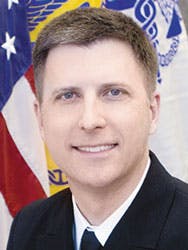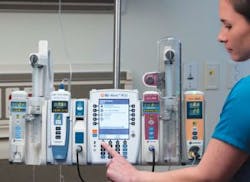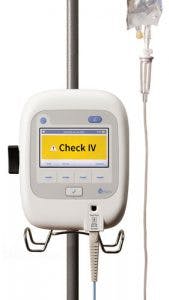Never events — serious, preventable medical errors that leave patients with debilitating injuries, life-threatening infections and worse — are considered mostly rare occurrences. But they still happen. Just over 20 percent of Americans surveyed last September by the Institute for Healthcare Improvement reported personal experience with a medical error and 31 percent said they were closely involved in the care of a patient who experienced an error. In addition, more than eight in 10 people believe patient safety is mainly the responsibility of healthcare providers, hospital leaders and administrators. When asked what caused the medical error they experienced, people identified, on average, at least seven different factors.1
Depending on whom you ask, or which reports reach your desk, it can be difficult to determine whether some healthcare facilities are marching toward reform or merely jogging in place. For instance, according to new Leapfrog research, one in five hospitals today do not have an established “Never Event” policy in position.
To report or not report
The exact number and nature of medical errors that occur annually is up for debate. Some events might be underreported and/or important details undisclosed.
“The rate of medical errors is likely higher than we know due to many factors,” said Laurel Shine, Patient Safety Specialist, Office of Quality and Patient Safety, The Joint Commission. “Reporting could be one of those factors as many organizations struggle to implement practices to align with a culture of transparency.”
“I agree that the rate of medical errors is likely to be higher than is reported,” said Linda Groah, MSN, RN, CNOR, NEA-BC, FAAN, CEO, Executive Director, Association of periOperative Registered Nurses (AORN). “One reason is that staffs continue to have fear of reprimands, discipline and negative response by peers. This is the focus in facilities where there is a blame and shame attitude as opposed to what can be learned from near misses and critical incidents. If the department has implemented the culture of safety they will use the incident as a learning experience, reviewing the policies/procedures, sharing the incident as a case study so all staff can learn from it and include education sessions on the root cause of the incident. Following the education of staff, managers will conduct audits to ensure that required changes in clinical performance are sustained.”
“And, while trust among team members is essential, that alone, cannot be construed as a reason to drift from practice,” added Shine. “It also is imperative that bedside staff and health care professionals question one another when a procedure does not meet expectations.”
Groah says when facilities do report mistakes the ensuing investigations often reveal common reasons for why they happened. “As part of the investigation there will be a human factors analysis as the Joint Commission has identified that 80 percent to 90 percent of the errors are human factors,” she said. “The most common causes of sentinel events are human factors, leadership and communication.
Avoiding common medical errors in the OR
Linda Groah, MSN, RN, CNOR, NEA-BC, FAAN, CEO, Executive Director, AORN shares some insights on how to help prevent four of the most common medical mistakes that occur in the perioperative environment.
- Retained surgical items (sponges, instruments)
According to the AORN Guideline for Prevention of Retained Surgical Items, the most commonly reported retained surgical items (RSIs) are surgical sponges. Evidenced-based recommendations to prevent retainment of sponges used inside a cavity include audibly communicating and recording the sponge location in a location visible to the perioperative team, leaving a portion of the sponge outside the surgical wound, and performing a methodical wound exploration. - Wrong side, wrong site, wrong patient, wrong procedure
The purpose of the Time Out prior to incision is to create a surgical pause that allows perioperative team members to be mindful in clinical practice and reflect on the specifics of the patient, intended procedure, surgical site and procedural laterality. Done correctly the Time Out can prevent errors. - Positioning injuries (soft tissue related to shearing force, nerve injuries)
To identify patients that are at high risk the AORN Guideline for Positioning the Patient recommends that perioperative RNs use a structured risk assessment tool. The available tools include Braden scale, Munro Scale and the Scott Triggers tool. The Munro Scale and the Scott Triggers tool are specific to perioperative patients. There are specific evidenced-based interventions to prevent positioning and pressure injuries outlined in the AORN Guideline for Positioning the Patient. - Medication errors (wrong medication, wrong dose, errors of omission)
The AORN Guideline for Medication Safety provides evidenced-based interventions to prevent medication errors in surgery. Some of the interventions include separating medications by generic names and packaging, separating high alert medication, providing dividers or bins in storage areas, use of tall man lettering, use of the seven rights of medication administration, immediate medication labeling when dispensed, and verbal confirmation when the medication is passed to a licensed independent practitioner for administration.
Leveraging leadership
Groah says apathy may also set in if there is limited support to implement lasting improvements. “Another reason why there is underreporting is the lack of follow-through or follow-up when incidents are reported — the attitude develops ‘Why take the time to report the incident — nothing is ever done about it anyway.’
The problem points to an urgent need for leadership engagement in patient safety issues, an item listed on ECRI’s Institute’s “Top 10 Patient Safety Concerns for Healthcare Organizations 2018.” Carol Clark, BSN, RN, MJ, a patient safety analyst at ECRI, says without C-suite and board member support, successful patient safety efforts are likely to dwindle. She recommends recruiting champions across the facility that can push for change at all leadership levels until risk managers achieve champion buy-in. “You have to engage them intellectually and emotionally,” she said. “Present crisp, on-target data that demonstrates the need.”
Shine says in the perioperative environment, continuous leadership participation is vital to upholding a culture of safety. “It is essential for leadership to foster an environment of encouragement and support while enforcing a ‘stop-the-line’ mentality in the perioperative area,” Shine said. “Leadership rounding of perioperative areas is an essential practice. While rounding must be completed with respect to the unique environment of the operating room and maintenance of sterile practices, it allows leadership to be engaged in daily operations. Surgical leadership rounding also enhances confidence in staff, as they are more inclined to implement policies as designed, 100 percent of the time.”
Groah concurs, noting that temporary progress usually follows a major medical mistake and that a lasting safety policy depends on strong healthcare-leader involvement. “There are episodic improvements that occur after a serious event but without the leadership providing the required support for patient safety being the number one priority, it is not sustained,” she said. “The facilities that have incorporated patient safety into the financial goals of all the staff are making the most progress toward creating a zero patient injury environment.”
The EHR: Close but no cigar
The electronic health record (EHR) was supposed to make healthcare delivery easier, more efficient and integrated. Not quite. It might have been a boon for billing and other administrative operations, but clinical experts feel that EHR systems aren’t structured in ways that make them immediately useful to nurses and doctors caring for patients on the frontlines. Furthermore, when not used carefully, health information technology can be as dangerous as it is helpful. Most EHR research and clinical-user surveys indicate that EHR systems slow processes down considerably and take critical time and attention away from patient care. In fact, sometimes errors are introduced inadvertently, including deadly ones.
Research in the Journal of Patient Safety identified numerous tragic medical mistakes related to EHR systems.2 For example, they discovered a baby’s fatal drug overdose after handwritten information was entered into the system incorrectly. Important ultrasound results routed to the wrong EHR tab resulted in a yearlong delay of a critically-ill patient’s cancer diagnosis. Another patient died from subarachnoid hemorrhage after a physician was unable to obtain specific emergency department notes in the EHR that would have provided the right treatment plan. The researchers said these and other problems happen when clinical staff automatically trusts the system is working correctly. They make data mistakes via copy-paste transactions, misroute urgent blood products, use templates with automatic data population that isn’t accurate, and other issues. “The recurring patterns provide valuable lessons that both practicing clinicians and health IT developers could use to reduce the risk of harm in the future,” the authors wrote.
Impossible workloads
Despite no shortage of evidence showing how understaffed and overworked care teams compromise patient safety, hospitals still seem to struggle with a shortage of clinical staff. Nurse burnout is a serious problem that gets a lot of attention but too often not much resolution. A survey of Chief Nursing Officers and other clinical leaders conducted last year by workforce solutions company AMN Healthcare, revealed only seven percent felt their departments were adequately staffed. Over 60 percent said shortages create a considerable or great negative impact on nurse morale, jeopardizing patient satisfaction and patient-care quality. The same problem plagues infection prevention (IP) departments. Severe gaps in staffing and outdated coverage benchmarks exist, according to two new studies published in the American Journal of Infection Control that explored infection prevention and control resourcing across a variety of healthcare settings. The coverage assessment revealed that actual IP labor needs were 31 percent to 66 percent higher than the current benchmarks system wide.3
The U.S. isn’t alone. Understaffed facilities and overworked clinicians are a significant problem in other countries as well. The British Medical Association (BMA), for example, is calling for a cap on how many hours physicians can work, noting that doctors are at a near-breaking point, with GPs seeing as many as 70 patients a day. “If forced to take on more and more work without additional funding, workforce and resources, the consequence will be that the quality of work will be compromised, and unsafe in the case of patient care,” said one doctor during an annual meeting of BMA delegates in June.
Perhaps staffing problems will reverse as U.S. healthcare organizations keep grappling with reimbursement tied to patient outcomes and readmission rates. Some states, such as Ohio, are currently mulling over new bills that would mandate fewer hours for nurses. Also on the horizon is a $1 million, federally-funded study on the effect that 12-hour shifts have on nurse fatigue and patient care. Researchers at Washington State University will study 50 dayshift workers and 50 nightshift workers with outcomes that could possibly influence national policy on safe-shift scheduling.5
Invest or regress
Following evidence-based practices is a clinician’s first line of defense but finding time to remain up-to-speed and knowledgeable about updates to guidelines and standards can be challenging, hence the greater chance there is for adopting the old “this is how we’ve always done it” philosophy. “Efforts to align order set content with the latest evidence often fall short due to a lack of the staff resources needed to create, maintain and review the large volumes of evidence that accumulate between review cycles,” suggested Craig Raeburn, Vice President of Commercial Programs at Provation, a company that offers software technology solutions that reduce clinical variation and standardize care based on current evidence and best practices. “When clinical decision-making is standardized and based on the latest industry evidence, hospitals and health systems are best positioned to improve outcomes, enhance patient satisfaction and control costs. Consider one study that conducted a comparison analysis of mortality and readmission rates across two groups of adult patients: one using an evidence-based pneumonia order set and the other that didn’t. Those using the order set realized a 42 percent reduction in mortality; 27 percent reduction in readmissions; and 10 percent reduction in length-of-stay.4
“While care variation can be traced to multiple sources, use of evidence-based order sets is seen as one of the most attractive investments for achieving goals around its elimination,” Raeburn continued. “Not only does care variation impede positive clinical outcomes, according to the Advisory Board, reducing it is considered by hospital CFOs to be the single most important cost opportunity — more so than labor and supply costs. In fact, 75 percent of executives said improving their current process would have a significant, positive impact on clinical outcomes.”
As mentioned earlier, preventing never events requires a commitment to treating patients using evidence-based medicine and standard practices every time. Investing in the right technology to help support that effort — and using is wisely — is also necessary. Here’s one good reason why: Last summer, the National Institutes of Health conducted a review of its flagship research hospital, The Clinical Center, and made some rather disturbing discoveries. “In some cases, equipment is so old that parts are no longer available, and technicians ‘must cannibalize some devices in order to keep others operational,’” said the authors of the report. They also noted frequent water leaks in some operating rooms, poor management and staff communication, lack of accountability and transparency regarding unexpected events, and low morale. Staff members said they often learned about patient-safety related events from the news rather than from their employer.”6
Opioids: SOS
As the nation feels the enormous weight of an opioid epidemic from the street, hospital patients who are not addicted are also suffering from opioid-related tragedies, namely death from respiratory depression.
“Currently, the standard of care in this country is that a healthcare professional will go into a patient’s room about every four hours — some hospitals do a little more often than that — but, regardless, after the healthcare professional checks the patient’s vital signs, they may be OK at that point in time,” said Marilyn Flack, Executive Director, Association for the Advancement of Medical Instrumentation (AAMI), in a recent webinar. “As soon as the healthcare professional leaves the room, patients are no longer being watched and they can slip away. They can start to deteriorate; they can move into respiratory depression, they can move into brain death or actual death. Only through the use of continuous electronic monitoring can you ensure that the patient is safe 100 percent of the time.”
Opioid-induced respiratory depression (OIRD) is common in general-care wards (inpatient med-surg units), says Ashish K. Khanna, MD, FCCP, FCCM, an intensivist and anesthesiologist and Vice-Chief for Research for the Center for Critical Care at the Cleveland Clinic, yet there is no reliable tool currently available to predict which patients are most likely to experience OIRD. Khanna is currently at work on a large multi-facility medical trial at 16 medical centers in seven countries to study a first-of-its kind validated respiratory-depression–risk prediction scoring tool for adult hospital patients receiving opioids. “Better portable continuous monitoring solutions in the general-care ward patient will provide an opportunity to our bedside nurses and doctors to identify these patterns, intervene on time and possibly save a life,” said Khanna. “My hope is that this trial will be a stimulus for more awareness of this problem, will change our culture of provision of monitoring for our patients on the floor and also will pave the way for more federal funding for clinicians and scientists who wish to make a difference in this field of investigation.” (See PRODIGY study sidebar, at left.)
Opioid safety across the continuum of care is also a concern and is No.2 on ECRI’s Top 10 report. An NIH news release from June echoes the urgency stating that 34 percent of people who experienced an overdose were subsequently prescribed one or more prescriptions for opioid painkillers over the next 12 months, and 26 percent were prescribed benzodiazepines.7
IV dangers
The majority of hospital patients receive medications and fluids through peripheral intravenous (IV) therapy, yet, several factors from insertion to unique patient qualities can lead to complications. “Not only is this vascular access procedure among the most common invasive procedure performed in health care, it’s a clinical gateway to nearly all health care delivery,” said Susan Brown, Chief Nursing Officer, ivWatch. “This procedure has a 50 percent failure rate, where 20 percent to 23 percent of those failures are due to infiltration and extravasation. Every infiltration is a medication dosing and delivery error that can impact the patient through prolonged hospital stays, temporary harm, or permanent injuries. Many hospitals have implemented programs such as hourly checks, visual assessments, and other internal programs. Unfortunately, harm from infiltrations and extravasations still occur.”
Sometimes medication errors occur before treatment even reaches the patient. “Despite the advancements in medication management technologies, the process of getting a medication from the pharmacy to the patient remains complex and, unfortunately, errors can still occur,” explained Thomas Utech, PharmD, Vice President, Solutions Management, BD. “It’s estimated that 68 percent of medication errors occur during the administration step of the medication management process. In the case of IV medications, errors in the compounding process pose a significant risk downstream because the medication could be labeled correctly despite its incorrect preparation. In this situation, the nurse can do everything right at the bedside, yet an error can still find its way to a patient.
“While advancements have been made to improve the safety and accuracy of medication management technologies, many of those technologies continue to live in isolation—disconnected from each other and from the EMR,” Utech continued. “This disconnected approach requires that information is manually passed from system to system, opening up the opportunity for communication gaps and errors, and requiring the clinical teams to spend a significant amount of time reconciling information between systems.”
Will it get better?
Earlier this year, the Agency for Healthcare Research and Quality (AHRQ) delivered more hopeful news. Facilities that implemented CMS initiatives designed to curb adverse drug events and injuries from falls, helped prevent an estimated 8,000 deaths between 2014 and 2016. It also saved $2.9 billion in healthcare spending.8
AHRQ also launched a new committee earlier this year comprised of several experts from healthcare, policy, regulatory, and advocacy communities to develop a national blueprint to reduce patient harms. The new National Steering Committee for Patient Safety is an effort that stems from a 2017 Call to Action issued by the National Patient Safety Foundation (NPSF).
“We recognize and appreciate hospitals’ ongoing efforts to prevent Never Events – and to adopt policies aimed at appropriate responses when a serious, reportable event occurs; but policies are only part of the solution,” said Jeffrey Brady, MD, MPH., Director, Center for Quality Improvement and Patient Safety, AHRQ. “In order to actually improve care, hospitals also need the tools to help clinicians and staff implement those policies. For example, AHRQ’s CANDOR Toolkit was developed to support timely, thorough, and just responses to unexpected episodes of patient harm. Prevention is the ultimate goal, but it’s also important to respond appropriately when patient safety events do occur.”
The news is promising and should serve to inspire greater efforts to implement and maintain strong patient safety policies across the nation. Meanwhile, many organizations are committed to patient safety protocols and to removing the barriers that prevent accurate, honest reporting of adverse events.
“Over the past several years, The Joint Commission has noted an increase in self-reports of sentinel events as organizations are more willing to review incidents with our team in an effort to improve patient safety and quality of care,” said Shine. “Harnessing technology to reduce adverse events, increasing awareness of human factors in medical errors and building a culture focused on patient safety are steps highly reliable organizations are taking to improve quality of care.”
Spotlight on Patient Safety products
The BD HealthSight platform for enterprise medication management combines connective technologies, analytics and expert services that close gaps across BD medication management solutions, such as BD Pyxis dispensing and BD Alaris infusion solutions. By connecting these systems—with each other and with the EMR—there is opportunity for improved visibility and accuracy throughout the medication management process. In an effort to reduce medication errors and alerts, SCL Health implemented BD Alaris EMR interoperability and achieved an 86 percent reduction in manual keystrokes on the pump, 39 percent decrease in total monthly pump alerts, and 41 percent decrease in infusions requiring reprogramming.
The ivWatch Model 400 uses light to monitor a patient’s subcutaneous tissue continuously while measuring any changes in the optical properties of the tissue. During an infiltration, fluid accumulates in subcutaneous tissue, causing a significant change in the light scattering. The ivWatch Model 400 recognizes these changes in the reflected light, first providing a YELLOW CHECK IV notification indicating the possibility of an infiltration. If the infusion continues and the signal continues to drop further below the threshold, a RED CHECK IV notification will appear on the monitor, indicating a probable infiltration. The signal processing algorithm used to issue the YELLOW and RED CHECK IV notifications is optimized to maximize sensitivity and specificity for infiltration events, while minimizing the number of false alarms from other events such as patient motion.
GloShield is a single-use safety device that reduces the risk of OR fires and burns attributed to fiber-optic light cables in an intuitive way. It functions by connecting to the distal (scope) end of the light cable during the entirety of the surgical procedure. When a scope needs to be attached to the light cable, instead of disconnecting GloShield completely, the user simply flexes GloShield out of the way and connects the scope normally. Upon scope disconnection, when an OR is most at risk, GloShield automatically rebounds to shield the environment from the light cable, eliminating the interaction between the heat/ignition source and the fuel (drapes).
Noble International’s injection trainers simulate the look, feel and functionality of actual injection devices and incorporate features and advancements that provide real-time feedback to patients—a number of which include audible clicks, haptic/visual cues and connected “smart” technologies. Designed to optimize the on-boarding process, this real-time feedback allows patients to have an interactive, step-by-step experience as they learn and provides a means for instilling cognitive and motor learning, all while allowing the user to train multiple times. Studies suggest 40 percent to 80 percent of information provided by clinicians is forgotten immediately. When used properly, training devices can lead to a 55 percent reduction in user errors and have been shown to be more effective than using only traditional print and digital patient education materials.
Provation Order Sets with Order Set Advisor has four main components. The Management Application enables order set owner/builders to import, edit, manage, compare and report. The Web Review Tool allows clinicians and subject matter experts (SMEs) to review, invite, collaborate, approve and make requests. The Order Set Advisor automatically analyzes existing order sets against latest evidence, identifies content gaps, makes update recommendations to SMEs and the informatics team. The Web Print Application is a web-based library of approved order sets that serves as an EHR down-time solution for clinicians.
References
- http://www.ihi.org/about/news/Documents/IHIPressRelease_Patient_Safety_Survey_Sept28_17.pdf
- https://journals.lww.com/journalpatientsafety/Abstract/publishahead/Electronic_Health_Record_Related_Events_in_Medical.99624.aspx
- https://www.ajicjournal.org/article/S0196-6553(17)31230-0/fulltext
- https://www.ncbi.nlm.nih.gov/pmc/articles/PMC4576442/
- https://news.wsu.edu/2018/05/01/study-focuses-impacts-12-hour-shifts-nurses/
- https://www.prnewswire.com/news-releases/only-continuous-electronic-monitoring-can-ensure-patients-receiving-opioids-are-safe-aami-video-to-keep-patients-and-their-families-safe-300611012.html
About the Author

Valerie J. Dimond
Managing Editor
Valerie J. Dimond was previously Managing Editor of Healthcare Purchasing News.







